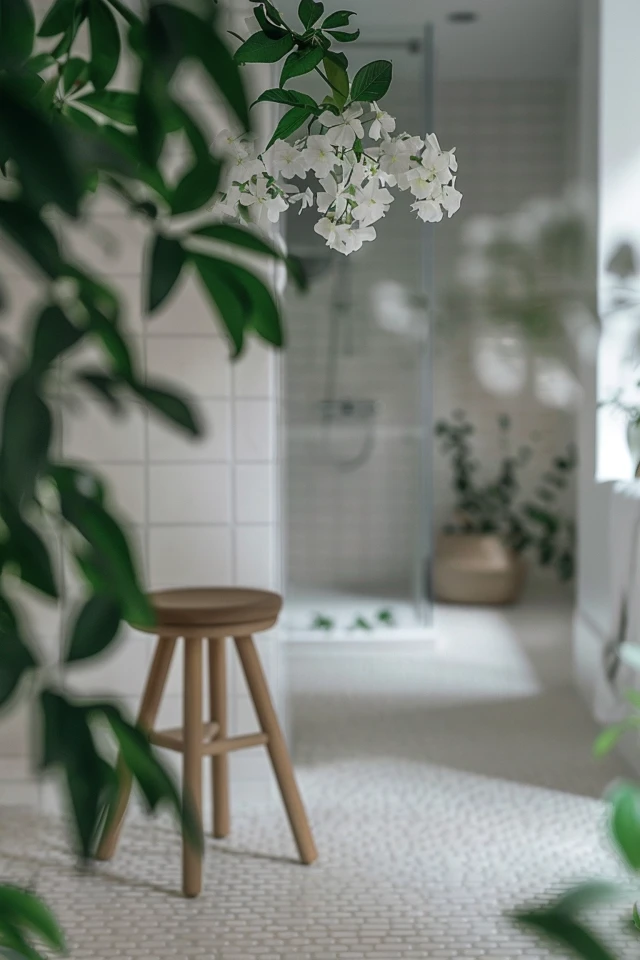When it comes to keeping your bathroom clean and looking pristine, knowing how to effectively remove adhesive residue from your shower walls is essential. Whether you’re dealing with leftover adhesive from tiles, hooks, or stickers, finding the best way to clean adhesive in the shower can make a big difference.
There are various methods and materials that can help you remove adhesive from different surfaces, such as metal, plastic, wood, glass, and fabric. From mechanical scraping to chemical solvents, each method has its own advantages and considerations. The key is to choose the right approach based on the surface material and the type of adhesive you’re dealing with.
By following the proper techniques and using the right tools, you can effectively remove adhesive residue and restore the clean and polished look of your shower walls.
Key Takeaways:
- Knowing how to remove adhesive residue from shower walls is crucial for maintaining a clean bathroom.
- There are various methods and materials available, including mechanical, chemical, and thermal approaches.
- Consider the surface material and follow manufacturer instructions when choosing the appropriate method.
- Test products on a small area before applying them to avoid any potential damage.
- Remove adhesive from different surfaces, such as metal, plastic, wood, glass, and fabric, using specific cleaning techniques.

How to remove adhesive residue: What you need to know
When working with adhesives, it’s important to know how to remove adhesive residue effectively. There are three main approaches: mechanical, chemical, and thermal.
1. Mechanical methods: Use scraping tools such as plastic pan scrapers or razor blades to carefully trim away adhesive remnants. Take care not to damage the surface while scraping.
2. Chemical methods: Apply solvents like cooking oil, rubbing alcohol, or commercial adhesive removers to break down the adhesive properties. Gently rub or wipe the residue with a soft cloth soaked in the chosen solvent. It is essential to read the manufacturer’s instructions and test the solvent on a small, inconspicuous area first to ensure it doesn’t cause any damage or discoloration.
3. Thermal methods: Use heat to weaken adhesive bonds. You can use a hairdryer or a heat gun to warm the adhesive residue, making it easier to remove. Be cautious not to apply excessive heat or hold the heat source too close to avoid any damage to the surface.
When deciding which method to use, consider the type of adhesive and the material of the surface. Certain adhesives may respond better to specific removal methods. Always perform a patch test before proceeding with the full removal process to avoid any unwanted consequences.
“Removing adhesive residue requires patience and caution. It’s important to select the appropriate method and materials based on the type of adhesive and the surface you’re working with.” – Your Name/Brand

How to remove adhesive from different surfaces
The process of removing adhesive residue may vary depending on the surface material. Here are some effective methods for removing adhesive from common surfaces:
Metal:
To remove adhesive from metal surfaces, try using rubbing alcohol or baby oil. Apply a small amount of either solution onto a cloth and gently rub the adhesive until it dissolves. Rinse the area with water and pat dry.
Plastic:
For plastic surfaces, a mixture of warm, soapy water or vinegar can be used to remove adhesive residue. Apply the solution onto a cloth and scrub the adhesive gently. Rinse with water and dry thoroughly.
Wood:
When removing adhesive from wood, various methods can be effective. One approach is to use a damp cloth to wipe away the residue. For stubborn adhesive, applying heat using a hairdryer can help soften the bond. Alternatively, household products like vinegar or vegetable oil can be applied to the adhesive, left to sit for a few minutes, and then wiped away. If these methods do not work, commercial glue removers may be used following the manufacturer’s instructions.
Glass:
To remove adhesive from glass, consider using acetone or nail polish remover. Apply a small amount onto a cloth and gently rub the adhesive until it loosens. Rinse the area with water and dry with a clean cloth.
Fabric:
When dealing with adhesive on fabric, different methods can be used effectively. Stain removers can be applied directly to the affected area and then washed according to the fabric’s care instructions. Spot cleaning with a solution of detergent or ammonia diluted in hot water can also help remove adhesive residue. Another option is to use rubbing alcohol-based hand sanitizers, applying a small amount onto a cloth and blotting the adhesive until it dissipates. Always test these methods on an inconspicuous area of the fabric first to ensure that no damage occurs.
Remember to use caution and follow the manufacturer’s instructions when using any adhesive remover or cleaning solution. Testing these methods on a small area is crucial to avoid potential damage to the surface. By knowing how to remove adhesive from different surfaces, you can effectively clean up any residue and restore the beauty of your belongings.

Conclusion
Removing adhesive residue from shower walls requires the use of appropriate methods and materials based on the surface material. Mechanical, chemical, and thermal approaches can all be effective in removing adhesive residue. It’s important to consider the type of adhesive and the surface material before choosing the method.
Following manufacturer instructions and testing products on a small area are crucial steps to ensure successful adhesive removal. By knowing how to remove adhesive from shower walls, you can keep your bathroom clean and free from unsightly residue.

